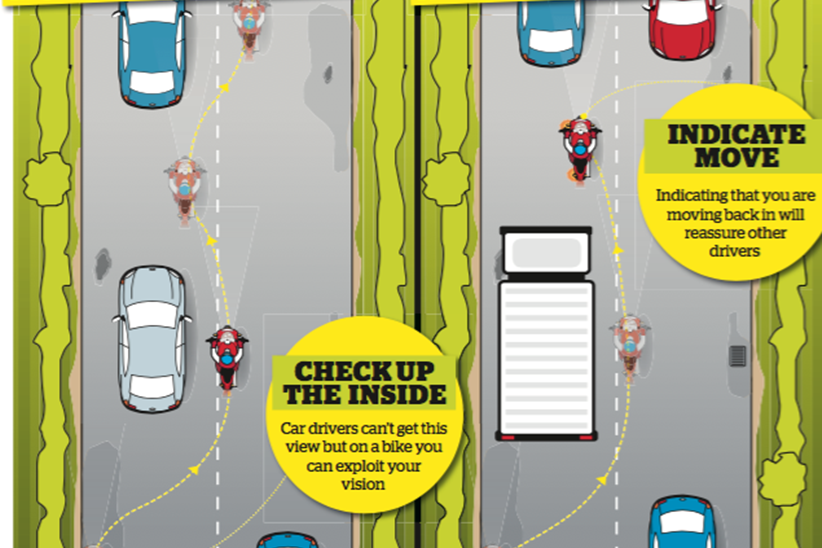Crafty tips to perfect overtakes
The sweetest moment to overtake a single car is when you first come up behind it. Carrying your momentum, you pass with a minimum of fuss in a decisive and understated sweep.
One way to tell if you’re riding well – and planning ahead – is to see if you can engineer successive momentum overtakes by employing subtle approach-timing so you arrive with all checks done and momentum maintained. You may adjust your throttle but don’t properly back off. You find a fluid overtake rhythm, and depart the scene without touching your brakes or ruffling anyone’s feathers.
Often it’s impossible to use the momentum technique, and that’s no problem, so back off and sit in. Desperately late or overambitious drivers have to maintain that momentum at all cost or they will never get past that lorry. But a bike with 60bhp or more can use its power- to-weight ratio to nip past anything.
Make sure you are in a gear that plants you in the torque with a responsive throttle and revs in hand. Be proactive. Make a plan. Quickly identify opportunities and areas of danger that will prevent any immediate progress.
If it’s a lorry you’re stalking, sit back so you can look down its near side; until you know whether or not there’s a T-junction or a cyclist or a tractor under its nose you have to be patient.
Sitting passively, waiting for the chance to come to you, is no good. Anticipate not only where opportunities may lie but also what dangers could be lurking – and keep a balanced view.
Move to the offside without accelerating, and, when you are happy, pass as quickly as possible. The move to the offside gives you a new viewpoint and should confirm your plan and give you a chance to abort if necessary.
You know you have the acceleration to nip out, pass and nip in again but oncoming traffic can get nervous. You can reassure them by indicating left to show you’re about to move back left out of their lane. And don’t forget mirrors. There’s lots to do and practise here but a glance behind could be the most important job of all.
Drills
- Decide how you can time your approach to best advantage
- Look for opportunities while simultaneously considering dangers
- Build in a confirmation phase before you commit


